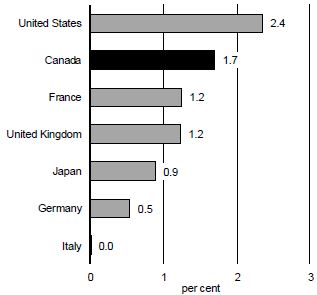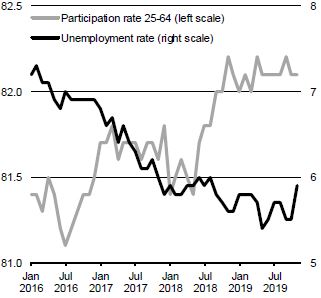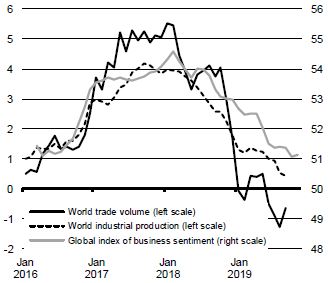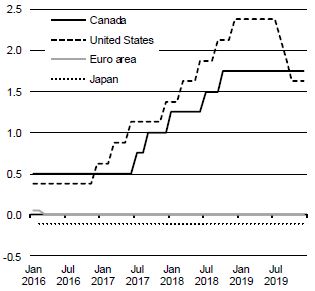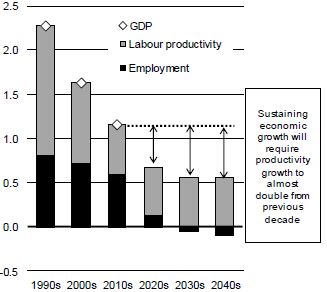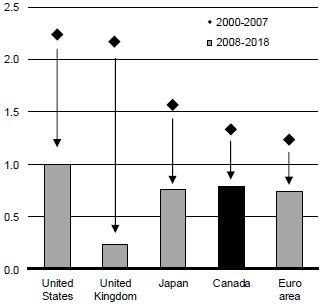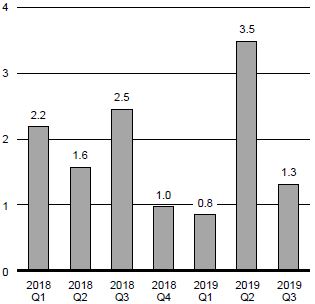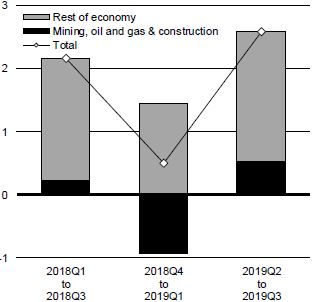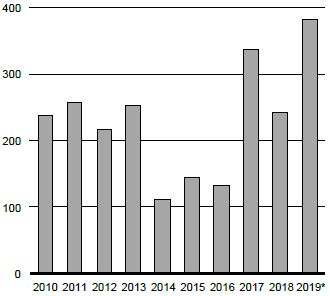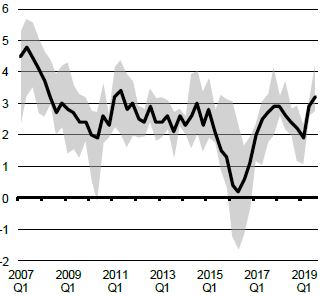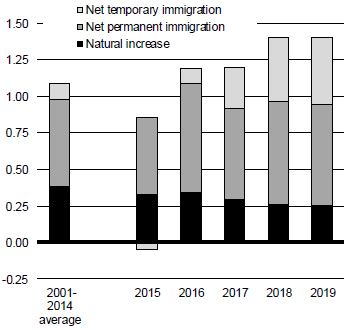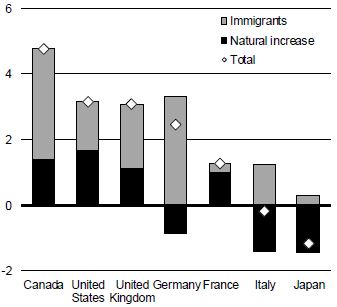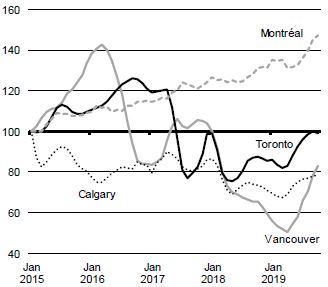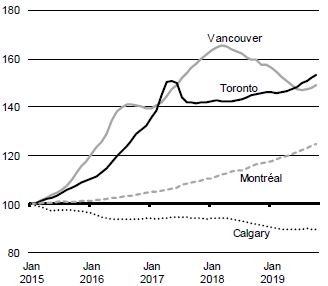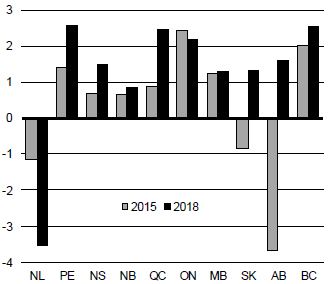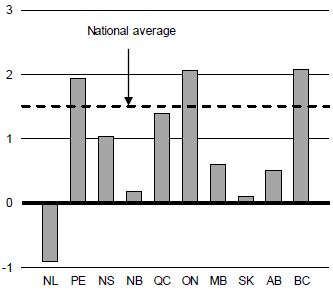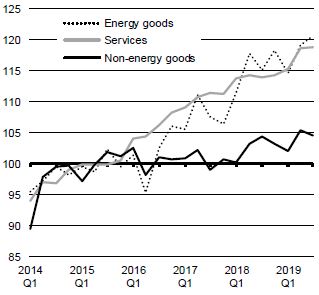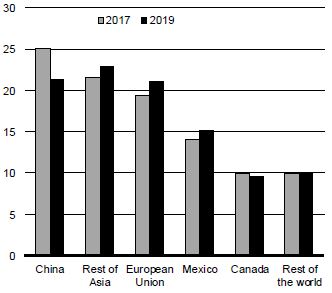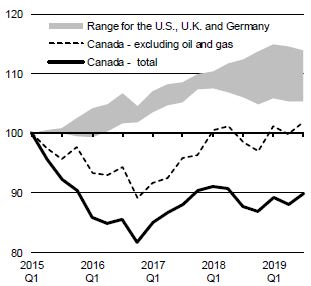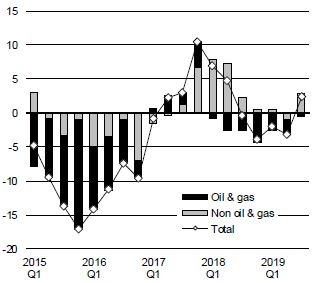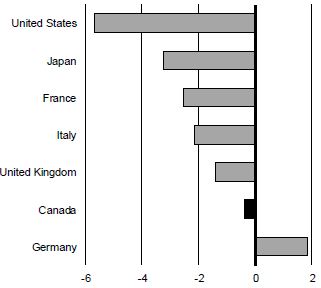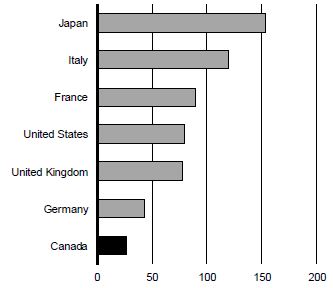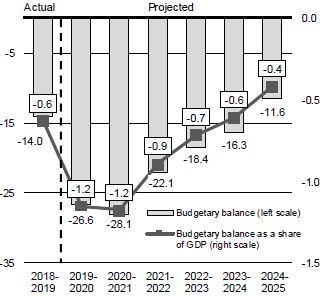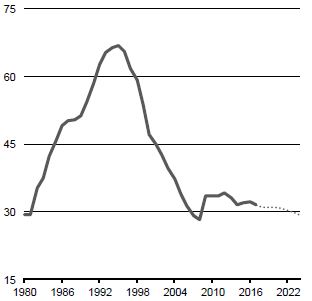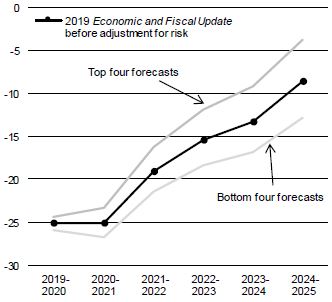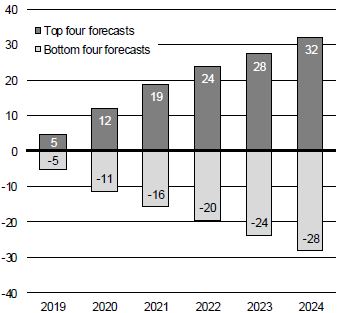Personal income tax (PIT) revenues—the largest component of budgetary revenues—are projected to increase by $7.7 billion, or 4.7 per cent, to $171.6 billion in 2019–20. This reflects continuing strength in the labour market and better-than-expected 2018–19 results that are expected to carry forward. Over the remainder of the projection period, PIT revenues are forecast to increase faster than growth in nominal GDP, averaging 3.8 per cent annually, reflecting the progressive nature of the income tax system combined with projected real income gains.
Corporate income tax (CIT) revenues are projected to decrease by $3.6 billion, or 7.1 per cent, to $46.8 billion in 2019–20, due to the cost of tax incentives introduced in the 2018 Fall Economic Statement to encourage business investment. Over the remainder of the projection period, CIT revenues are expected to grow at an average annual rate of 4.9 per cent, driven by growth in corporate profits and a lower cost of the tax measures as they mature.
Non-resident income tax revenues are income taxes paid by non-residents on Canadian-sourced income, notably dividends and interest payments. For 2019–20, non-resident income tax revenues are projected to increase by $0.3 billion, or 3.2 per cent. Over the remainder of the forecast horizon, these revenues are projected to grow at an average annual rate of 2.0 per cent.
Goods and Services Tax (GST) revenues are forecast to grow by 3.6 per cent in 2019–20 based on recent financial results and projected growth in taxable consumption over the rest of the year. Over the remainder of the projection period, GST revenues are forecast to grow by 3.8 per cent per year, on average, based on the outlook for taxable consumption.
Customs import duties are projected to decline 16.6 per cent in 2019–20 due to the removal of retaliatory tariffs on steel, aluminum and other products. Over the remainder of the projection horizon, annual customs import duties are projected to increase at an average of 2.5 per cent, based on the outlook for imports.
Other excise taxes and duties (OETD) are projected to increase by $0.4 billion, or 3.2 per cent, to $12.5 billion in 2019–20, based on recent financial results. Over the remainder of the projection horizon, OETD revenues are expected to grow at an average annual rate of 0.6 per cent based on historical consumption trends.
The revenue outlook includes an estimate for fuel charge proceeds that arise from the provinces and territories that are part of the federal pollution pricing system. In Ontario, Manitoba, Saskatchewan and Alberta, these proceeds will be returned primarily through Climate Action Incentive payments to eligible individuals and families in those provinces. In Yukon and Nunavut, proceeds will be returned directly to those governments.
EI premium revenues are projected to rise by 1.6 per cent in 2019–20 as growth in employment earnings is partially offset by declines in the EI premium rate, from $1.66 per $100 of insurable earnings in 2018 to $1.62 in 2019, and to $1.58 in 2020 (as announced in September by the Canada Employment Insurance Commission). EI premiums are then projected to decrease by 0.7 per cent in 2020–21, as the premium rate is expected to decline further to $1.55 in 2021. Over the remainder of the forecast horizon, EI premium revenues are projected to grow at an average of 2.6 per cent annually, driven by growth in employment and in earnings.
Other revenues consist of three broad components: net income from enterprise Crown corporations; other program revenues from returns on investments, proceeds from the sales of goods and services, and other miscellaneous revenues; and revenues in the Exchange Fund Account.
Enterprise Crown corporation revenues are projected to increase by 2.4 per cent in 2019–20, and grow thereafter at an average annual rate of 6.7 per cent over the remainder of the forecast horizon, reflecting outlooks presented in the corporate plans of respective enterprise Crown corporations and higher projected revenue from the Crown Borrowing Program, reflecting the projected increase in interest rates over the horizon.
36 Annex 1









